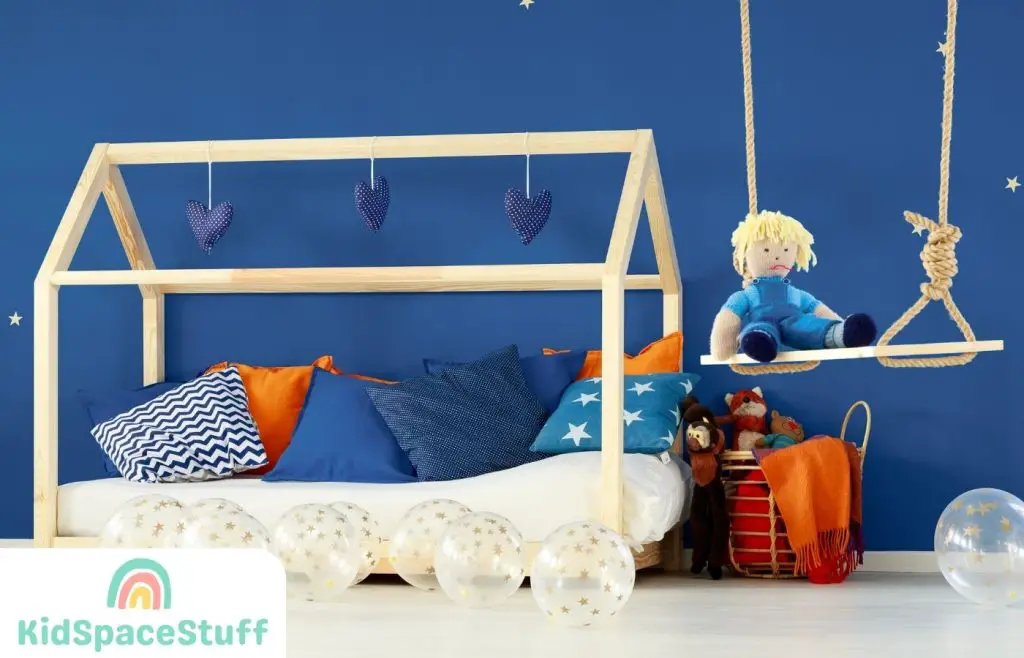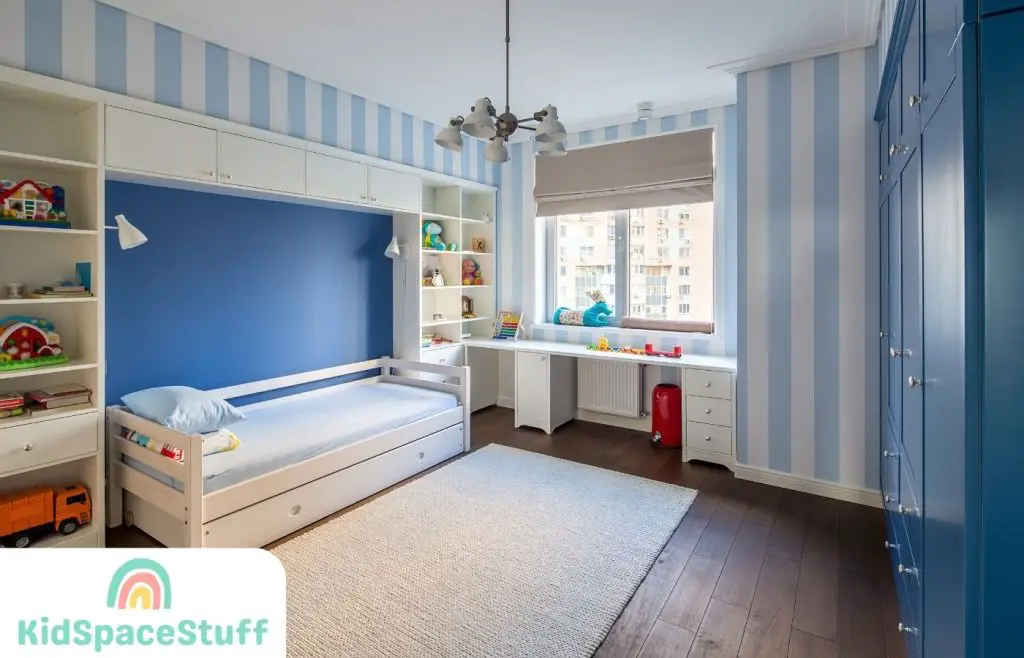As an interior designer, color is one of my primary tools. It sets the mood of a room, influencing how we feel when we enter.
When it comes to designing children’s rooms, color takes on even more significance. Kids are naturally responsive to color, and the right hues can inspire creativity, comfort, and joy.
One of my favorite color combinations for a child’s room is blue and navy. Here are a few reasons why and some ideas for your own inspiration!
The Psychology of Blue and Navy

Before we delve into how to incorporate blue and navy into your child’s room, let’s consider why these colors work so well in a kid’s space.
Blue is a calming color, often associated with the sky and sea. It’s known for its relaxing effects and is often used in bedrooms and other areas meant for rest and relaxation. It can help to lower heart rate and blood pressure, making it an ideal choice for a space where your child will sleep.
Navy, a deeper shade of blue, exudes a sense of tranquility and stability. It can make a room feel cozy, and when used correctly, it can add depth and sophistication. Navy is also versatile, acting almost as a neutral and pairing well with a variety of other colors.
Starting With a Blank Canvas
When designing a blue and navy children’s room, start with a blank canvas. Keep the larger elements of the room in neutral shades—think white, beige, or light gray. This provides a base upon which the blues can shine without overwhelming the space.
Incorporating Blue and Navy

Now, it’s time to bring in the blues. Begin with the walls, which offer the largest surface area. Consider painting one or two walls in a soft blue. This gives a soothing backdrop without turning the room into a sea of blue.
For the navy, consider incorporating it through furniture. A navy dresser or bookshelf can act as a focal point, drawing the eye and grounding the room. It’s a bold choice, but remember, navy behaves almost like a neutral, so it won’t feel too overwhelming.
Textiles and Accessories
Textiles offer another avenue to introduce blue and navy. Think bedding, curtains, area rugs, and throw pillows. Mix and match shades and patterns to add depth and interest. For instance, navy curtains against light blue walls can create a stunning contrast, while a mix of light blue and navy pillows on the bed can add layers of comfort and color.
Don’t forget about accessories. Artwork, lampshades, bins, and even toys in shades of blue can tie the room together. Consider a mix of soft blues, vibrant turquoise, and deeper navy to keep things interesting.
Play With Patterns
Patterns can make a room feel lively and exciting. Consider wallpaper or decals with a blue or navy pattern for one of the walls. Stripes, polka dots, or geometric patterns can add a fun element to the room. Alternatively, a patterned rug or curtains can break up the solid colors and bring a sense of whimsy.
Balancing with Neutrals and Pops of Color
While blue and navy are the stars of the show, neutral tones are essential to balance the color scheme. White or beige furniture, natural wood elements, or gray textiles can provide a break from the blues and give the eye a place to rest.
For a bit of excitement, introduce a few pops of contrasting color. Shades of yellow or coral can work beautifully with blue and navy, adding warmth and energy to the room.
You can also consider the flooring of your kids room to help balance it out the bright blue and navy colors.
Here’s a great video to help you design your kids room!
Final Thoughts
A blue and navy color scheme can create a soothing and stylish children’s room. These hues evoke feelings of calmness and stability, ideal for a space where your child will rest and play. Whether you’re painting walls, choosing furniture, or selecting textiles, there are numerous ways to incorporate these colors into your design.
Remember, the key to a successful design is balance. Mix light and dark hues, play with patterns, and don’t forget to incorporate neutral elements and pops of contrasting color. The result will be a room that’s not only beautiful but also supports your child’s well-being and creativity.
KidSpaceStuff is a site dedicated to helping parents find the best interior design, activities, and inspiration for their kids.